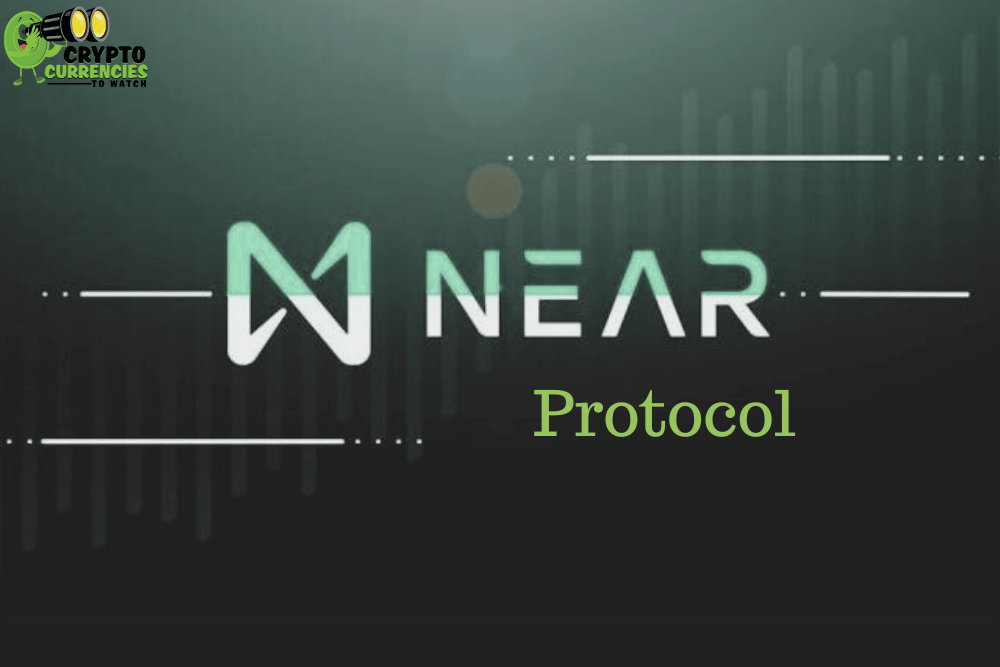Near Protocol is a Proof-of-Stake (PoS) blockchain network where developers can create decentralized applications (dApps). But how exactly does Near protocol work, and how does it differ from competitors like Solana?
This article explains everything you need to know.
What is Near Protocol (Explained)?
Near Protocol is a carbon-neutral layer-1 blockchain network. A layer-1 blockchain is an underlying blockchain that serves as a foundation network on which applications are built.
Near Protocol is referred to as carbon neutral because, unlike proof-of-work (PoW) blockchains, it does not consume large amounts of electricity to validate transactions.
Similar to centralized data storage systems, Near Protocol serves as a user-friendly base layer on which applications can be built. The network is different from centralized data storage systems, though, because it is operated and maintained by a network of computers rather than an individual or a single entity. Due to this, the applications created on Near Protocol are decentralized applications (dApps), not centralized ones.
Near Protocol aims to create seamless experiences for users and developers by providing accessibility to and interoperability with other blockchain networks. The blockchain also uses the Proof-of-Stake (PoS) consensus mechanism, which is a more climate-friendly alternative to Proof-of-Work, to ensure low transaction fees.
NEAR Token
The native cryptocurrency for Near Protocol is the NEAR token. This token allows users to pay transaction fees, pay storage fees and use applications built on the network.
Validators who stake their tokens in order to maintain the security and validity of the network earn rewards in the form of extra tokens. On the other hand, validators who become inactive or dishonest are being penalized. The penalty is known as slashing, and it involves the validators losing their potential rewards.
The blockchain increases its token supply by 5% every year, and most of these newly released tokens are used to reward validators. Still, on rewards, smart contract developers who build decentralized applications (dApps) on the blockchain receive 30% of all transaction fees throughout the network.
70% of all transaction and storage fees are burned or removed from circulation. This means that the number of NEAR tokens in circulation is gradually reduced, leading to an increase in the token’s value over time.
Who is the Founder of Near Protocol?
Near Protocol was founded by Alex Skidanov and Illia Polosukhin, who both worked in data-related companies.
Alex Skidanov formerly worked as a developer for Microsoft and later as the director of engineering at MemSQL, a database company.
Illia Polosukhin, on the other hand, used to work at Google. There, he handled Artificial Intelligence (AI) capabilities and search engine products.
Since its launch in 2020, Near Protocol has raised more than $20 million as funds because early-stage investors bought about 35% of the initial supply of one billion NEAR tokens.
How Does Near Protocol Work?
These three features, Nightshade, Rainbow Bridge, and Aurora, show how Near Protocol works. They are explained below.
Nightshade
Near Protocol solves the blockchain trilemma of being scalable, decentralized, and secure through a process called sharding.
Sharding is a concept that involves splitting the database on the network into smaller parts, known as shards. This process allows each participating computer, known as a node, to handle only a fraction of the network’s transactions.
The goal of sharding is to ensure a smooth and more efficient running of the blockchain with increased speed and performance. Each node stores and retrieves only a small part of the network’s data instead of the whole blockchain. This, in turn, enables more transactions to be processed per second and minimizes transaction fees.
Also, sharding allows for a more balanced distribution of data based on the computational resources available on the network. Each shard can be processed at the same time as other shards on the network.
Nightshade is a sharding technology built on the Near Protocol platform. It ensures that the network maintains a single data chain.
How? Each node is allowed to process small sections of the network’s data. After processing, the information is added to the single chain. This way, high security of the data on the network is maintained.
With Nightshade, the number of shards on Near Protocol is adjusted regularly based on user demand. Nightshade can create an unlimited number of shards and merge them at any time based on the computational needs of the network. This helps to reduce the average cost of processing transactions and increase efficiency.
Rainbow Bridge
Rainbow Bridge is a platform application that allows users to seamlessly move tokens from the Ethereum blockchain to Near Protocol and vice versa.
Any user who wishes to transfer tokens from Ethereum to Near Protocol needs to first deposit tokens in their Ethereum wallet. When these Ethereum tokens are locked, new tokens representing the original ones will then be created on the Near Protocol platform.
The process explained above is easily reversible. As a result, users can always retrieve their Ethereum tokens whenever they want.
Aurora
Aurora is a layer-2 scaling solution built on Near Protocol using Ethereum’s coding technology, Ethereum Virtual Machine (EVM). This scaling solution allows developers to launch Ethereum decentralized applications (dApps) on the Near Protocol network.
Aurora was created using a cross-chain bridge, which makes the network fully interoperable with Ethereum and its wallets. Hence, developers on Near Protocol can easily link their Ethereum assets.
Aurora creates a familiar environment on Near Protocol for Ethereum developers to work on decentralized applications at a lower cost. This feature also benefits users because it allows them to enjoy fast transactions and low transaction fees while using familiar Ethereum tools.
Near Protocol Vs Solana (A Brief Comparison)
Solana network is a blockchain that is similar to Near Protocol. Some of the similarities as well as differences that exist between Near Protocol and Solana are briefly stated below.
Similarities Between Near Protocol and Solana
- Both networks process transactions at a great speed and with low costs.
- Near Protocol and Solana both aim to solve the blockchain trilemma of maintaining security, decentralization, and scalability.
- Both blockchains use the Proof-of-Stake (PoS) consensus mechanism to ensure security.
- The tokens of both networks, NEAR and SOL, grant validators governance tokens which gives them the right to have a say when changes are about to be made on their networks.
- Both Near Protocol and Solana were launched in 2020.
- Decentralized applications (dApps) can be built at a minimized cost on both networks.
Differences Between Near Protocol and Solana
- Solana has more users than Near Protocol.
- More decentralized applications have been built on the Solana blockchain than on Near Protocol.
- Solana has more active nodes than Near Protocol.
- In terms of market capitalization, the Solana blockchain appears to be more established than the Near Protocol. The Solana coin (SOL) is currently the fourth largest cryptocurrency, while the NEAR token is the 18th largest cryptocurrency by market capitalization.
- Unlike Near Protocol, the Solana network has experienced many notable outages in service.
So, which blockchain is better? Near Protocol or Solana?
Users may have to consider the similarities and differences between these two blockchains and then decide for themselves which one will work better for them.
Is Near Protocol a Good Investment?
Users who see investing in Near Protocol as a good idea may do so because of the network’s many user-friendly features.
An example is the sharding technology, Nightshade, which secures the network and ensures its smooth running.
Additionally, users may find the Rainbow Bridge application very useful in transferring their tokens between Near Protocol and Ethereum blockchains.
Again, developers may decide to create and launch decentralized applications on Near Protocol.
Investors may decide to buy NEAR tokens and stake them in order to earn rewards in the form of extra tokens. They may also stake their tokens in order to earn governance tokens, which will give them the opportunity to have a say when decisions are about to be made on the blockchain.
As a potential investor, it is important to review the benefits and risks involved before investing in NEAR.
Summary
In this article, so much was said about Near Protocol. Here are some of the main points.
Near Protocol is a layer-1 blockchain network on which developers can create and launch decentralized applications.
The network was launched in 2020 and founded by Alex Skidanov and Illia Polosukhin.
The native token for Near Protocol is the NEAR token with which users can pay transaction fees and even earn rewards through staking.
Through the process of sharding, each participating node on Near Protocol is able to store and retrieve only a small part of the network’s data instead of the whole blockchain.
Rainbow Bridge and Aurora are scaling solutions that ensure interoperability between Ethereum and Near Protocol.
Users may find themselves comparing Near Protocol and Solana due to some of the similarities they have. However, they have some differences, as explained in this article.
Finally, users who want to invest in Near Protocol need to review the pros and cons associated with it before making a decision.
Find Cryptocurrencies to Watch and Read Crypto News on the Go Follow CryptosToWatch on X (Twitter) Now

